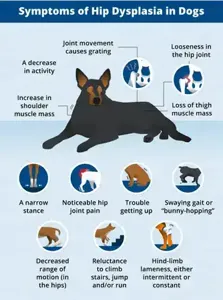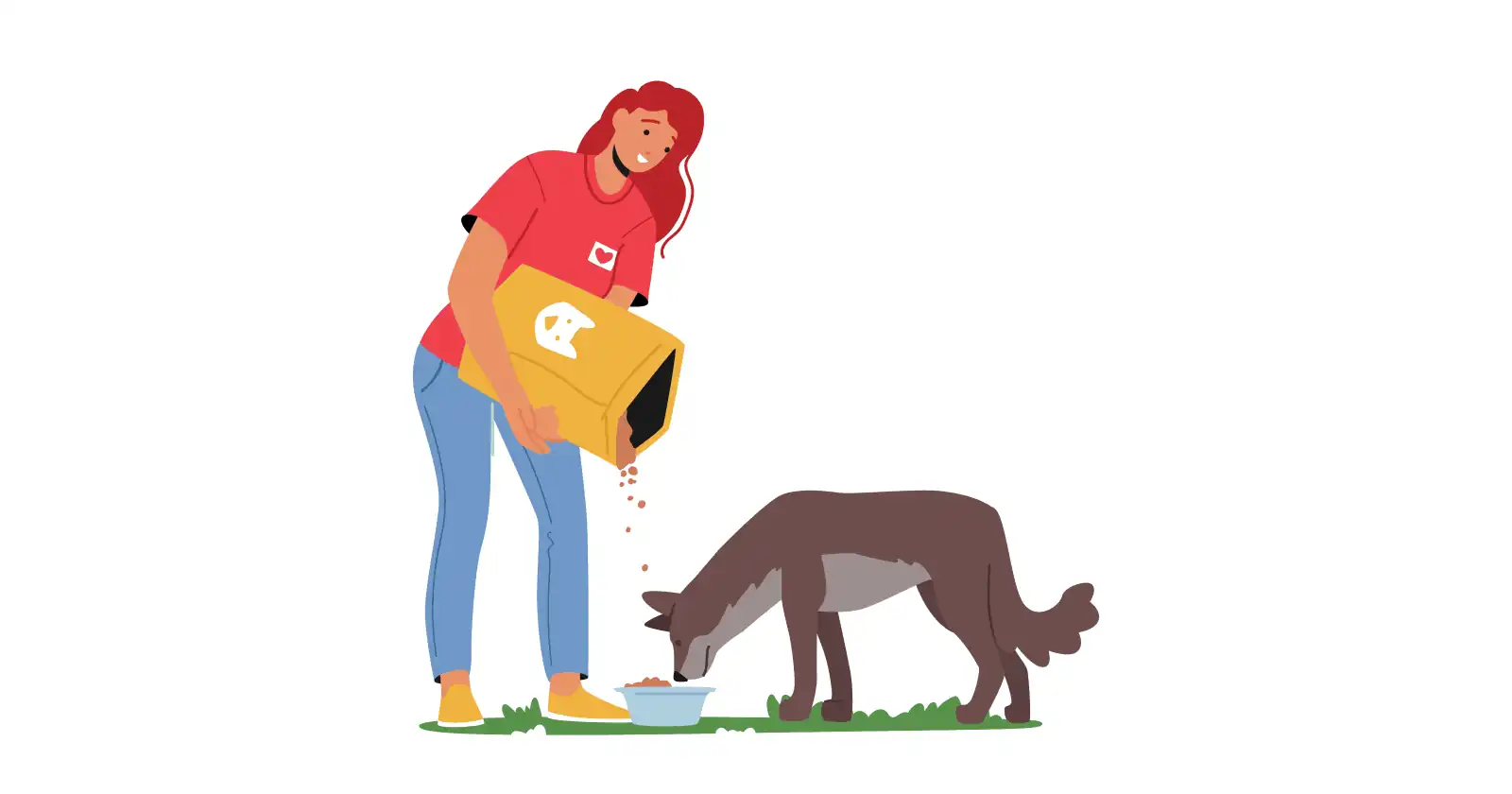Hip Dysplasia in Dogs - Care, Prevention & Treatment

Table of Contents
Hip dysplasia is a common orthopedic condition that affects dogs, causing discomfort, pain, and mobility issues. As pet parents, it's essential to be well-informed about this condition to ensure the well-being and happiness of our furry friends. In this comprehensive guide, we will delve into the world of hip dysplasia in dogs, exploring its causes, signs, diagnosis, treatment options, preventive measures, and tips for providing the best care to dogs with hip dysplasia.
What is Hip Dysplasia?

Hip dysplasia is a developmental disorder that affects the hip joint in dogs. It occurs when the ball and socket joint of the hip do not fit together properly, leading to instability and degeneration over time. Being a developmental disorder, it is not seen at birth but instead develops over time. While hip dysplasia can occur in any dog, certain breeds are more prone to this condition due to genetic factors and body structure.
Breeds Prone to Hip Dysplasia

Several dog breeds have an increased susceptibility to hip dysplasia due to various factors, including genetics, body structure, and popularity within breeding programs. Let's delve into why these breeds are more prone to hip dysplasia:
-
Labrador Retrievers: Labradors are energetic and highly active dogs, often engaging in vigorous exercise and activities. Their active lifestyle, coupled with a genetic predisposition to hip dysplasia, puts them at a higher risk for developing the condition.
-
German Shepherds: German Shepherds are renowned for their versatility and working abilities. Unfortunately, their popularity as a breed has led to an increased incidence of hip dysplasia. Selective breeding practices that prioritize specific traits without adequately considering hip health have contributed to the breed's susceptibility to the condition.
-
Golden Retrievers: Golden Retrievers are known for their friendly temperament and loyal nature. However, their genetics make them more prone to hip dysplasia. Responsible breeding programs focus on minimizing the occurrence of hip dysplasia in Golden Retrievers, but it remains a prevalent concern in the breed.
-
Rottweilers: Rottweilers, with their robust build and strength, are also susceptible to hip dysplasia. While they may not be as prone as some other breeds, hip dysplasia commonly affects Rottweilers as they age. Regular monitoring and proper care are essential for maintaining their joint health.
-
Bulldogs: Bulldogs have a unique body structure characterized by a broad chest and short, stocky limbs. Unfortunately, this conformation increases the strain on their hip joints, making them more susceptible to hip dysplasia. Responsible breeding practices and appropriate lifestyle management can help mitigate the risk.
It's important to note that while these breeds have a higher predisposition to hip dysplasia, it does not mean that every individual of these breeds will develop the condition. Responsible breeding practices, early detection, proper nutrition, and appropriate exercise can help minimize the risk and improve the overall well-being of these beloved breeds.
Signs and Symptoms

Early detection of hip dysplasia is crucial for timely intervention. Look out for the following signs and symptoms:
-
Reluctance to climb stairs or jump.
-
Difficulty rising or lying down.
-
Stiffness or lameness after exercise.
-
Bunny-hopping gait.
-
Limited range of motion in the hip joint.
-
Pain or discomfort when touched around the hip area.
Diagnosis and Treatment
If you suspect your dog has hip dysplasia, consult with a veterinarian for a proper diagnosis. The following steps are typically involved:
-
Veterinary Examination: A thorough physical examination and observation of symptoms.
-
Diagnostic Tests: X-rays and other imaging techniques to assess the hip joint's condition, such as hip scoring or PennHIP evaluation.
Treatment options may vary depending on the severity of hip dysplasia, and they can include:
-
Medications: Pain relievers and anti-inflammatory drugs to manage discomfort.
-
Weight Management: Maintaining a healthy weight reduces stress on the hip joints.
-
Physical Therapy: Controlled exercise, swimming, and rehabilitation exercises to improve muscle strength and joint stability.
-
Surgical Interventions: In severe cases, surgical procedures such as hip replacement or joint reconstruction may be necessary.
Prevention of Hip Dysplasia
While genetics play a significant role in the development of hip dysplasia, there are preventive measures that you, as a pet parent, can take:
-
Choose a responsible breeder who performs hip screenings on their breeding dogs.
-
Maintain a healthy weight for your dog through a balanced diet and regular exercise. You can do this by either consulting an expert pet nutritionist or using a dog food planner that is free on the Kuddle App.
-
Avoid excessive high-impact activities during your dog's growth phase.
-
Consult with your vet regarding the use of joint supplements or preventive medications.
Taking Care of a Dog with Hip Dysplasia

Caring for a dog with hip dysplasia requires dedicated attention and the implementation of supportive measures to ensure their comfort and overall well-being. Here are some important steps you can take:
-
Provide a comfortable and supportive sleeping area: Invest in orthopedic bedding that offers adequate cushioning and support for your dog's joints. This helps alleviate pressure on the hips and provides a more restful sleep.
-
Modify the living environment: Make your home more accessible for a dog with hip dysplasia. Remove any obstacles or hazards that could pose a risk for falls or increased strain on the joints. Consider installing ramps or stairs to provide easier access to elevated areas like beds or sofas.
-
Implement a controlled exercise routine: Regular exercise is crucial for maintaining muscle tone and weight management, which can alleviate stress on the hip joints. However, it's important to consult with a dog behaviorist to develop a customized exercise plan that takes your dog's condition into account. Low-impact activities like swimming or controlled walks on soft surfaces can help keep your dog active while minimizing strain.
-
Consider joint supplements and diets rich in Omega-3 fatty acids: Certain supplements, such as glucosamine and chondroitin, can help support joint health and reduce inflammation. Additionally, incorporating a diet that is rich in Omega-3 fatty acids, found in fish oil or specific dog foods, can provide further support for your dog's joint function. Do make sure to consult a pet nutritionist before adding supplements to your pet’s diet!
-
Regular veterinary check-ups: Schedule routine check-ups with your veterinarian to monitor the progress of your dog's hip dysplasia and make any necessary adjustments to the treatment plan. Your vet may recommend additional interventions, such as pain management medications or physical therapy, to alleviate discomfort and maintain mobility.
Remember, every dog with hip dysplasia is unique, and the management approach may vary. Work closely with your veterinarian to develop a tailored care plan that addresses your dog's specific needs. With proper care and attention, you can help your furry friend live a comfortable and fulfilling life despite their hip dysplasia.


